
With the aim of developing better understanding in Japan of Southeast Asian culture and society, in which moderate Islam is deeply embedded, this program engages Southeast Asian Muslims and Japanese youth in conversations (hereafter referred as TAMU). From November 4th to 13th, 2018, ten young Muslim leaders from seven Southeast Asian countries visited Japan and took part in various exchange activities in Tokyo, Shimane, and Yamaguchi. About TAMU, please visit the following site.
Exchange with Southeast Asian Muslim Youth (TAMU/Talk with Muslims series)
The program started with an introductory session with the program advisors, Professor Emeritus Mitsuo Nakamura of Chiba University and Associate Professor Ken Miichi of Waseda University. Prof. Miichi gave a lecture on Japan, Southeast Asia, and Islam, and analyzed contemporary Japan through demographics referring to the recent trends of increasing number of visitors from Southeast Asia as tourists and technical interns. Subsequently, Dr. Nakamura's lecture dealt with the historical background of Japan and the Islamic world centered around World War II followed by the postwar to contemporary Japan-Southeast Asia relationships. In the afternoon, Professor Toshiaki Kimura of the Graduate School of Tohoku University gave a lecture on the features of Japanese religion with a special focus on Shintoism and Buddhism. He explained how Japanese people generally perceive religion and how the Eastern Japan Great Earthquake had affected religious community in Japan to reconsider their roles in society.

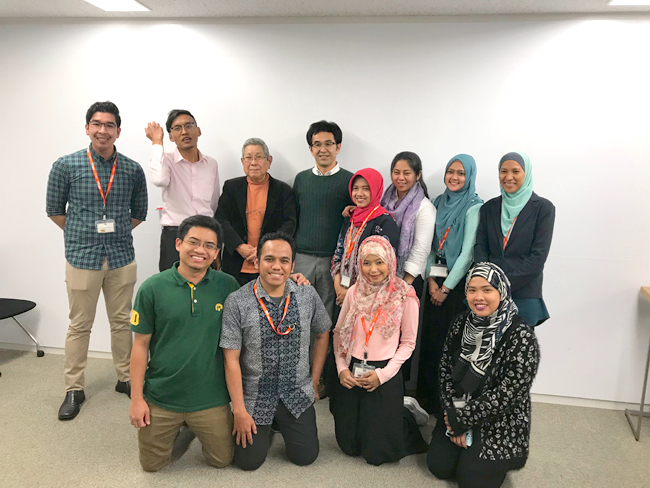
On the 6th, the group visited the Yokohama campus of Meiji Gakuin University. In the session initiated by Professor Reiko Okawa, Faculty of International Studies, about sixty students gathered and listened to the presentations by Ms. Fatily Sa of Cambodia on "Cambodian Society and Islam," and by Ms. Faizah Mohd Salihin of Singapore on "Islam and Women." Some of the comments made by students include "As we had little opportunity to learn about the Khmer Rouge and Islam in Cambodia, the information given was new to me," "I learned that Muslim women do not necessarily have to wear a hijab. The circumstances are diverse from country to country," "I had this simplistic image that the teachings of Islam are tough, but my talk with the Muslim friends reveled that Islam was much more modernized than I had imagined," and many others.
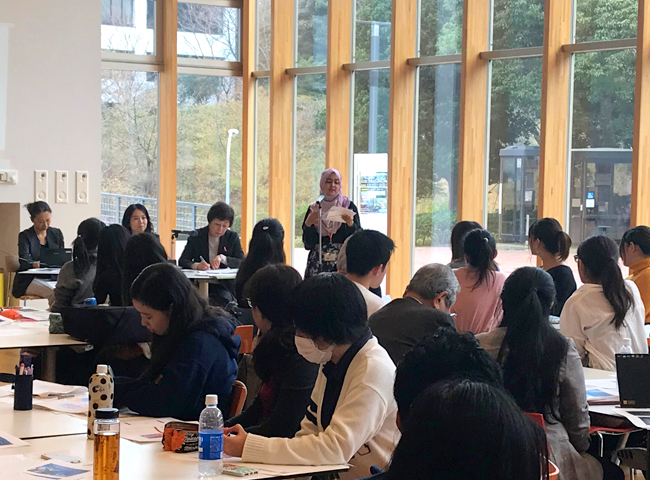
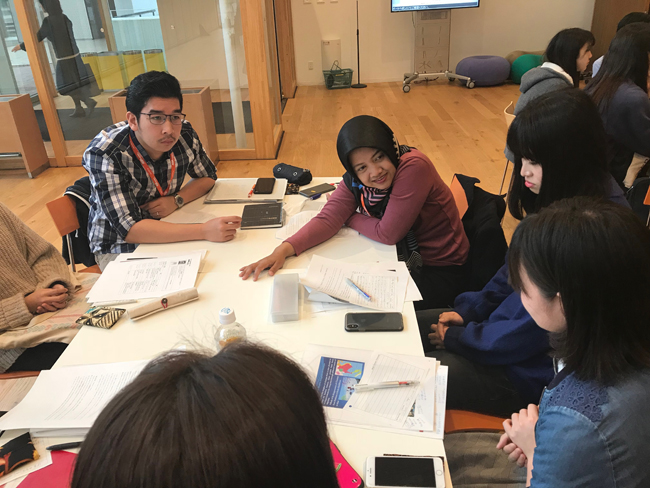
At the Yokohama campus of Meiji Gakuin University
In the evening, the TAMU group met with some young Muslims living in Japan, mostly Japanese-Muslims, to understand the current state of the Muslim community in Japan. The invited guests shared their background and experiences: religious practice and daily life in Japan, concerns for child education, conflicts over their identity of being Japanese and Muslim at the same time, and so forth. TAMU participants reacted by saying that they also had similar identity issues, even though some of them were born and raised in Muslim-majority countries, while those who live in Muslim-minority countries sympathized with the situation and concerns of the Muslims living in Japan.
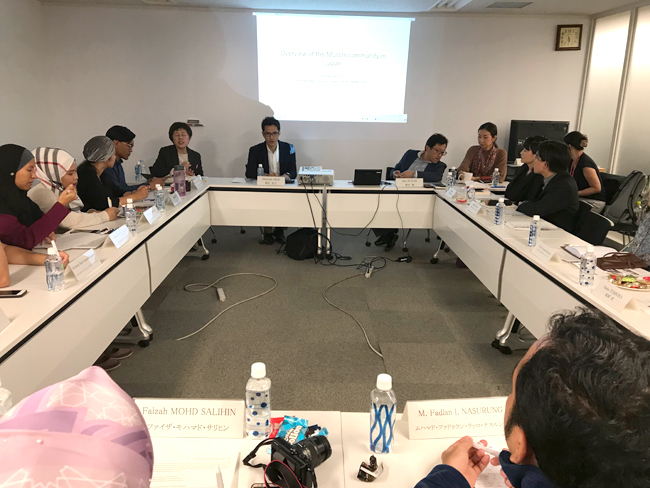
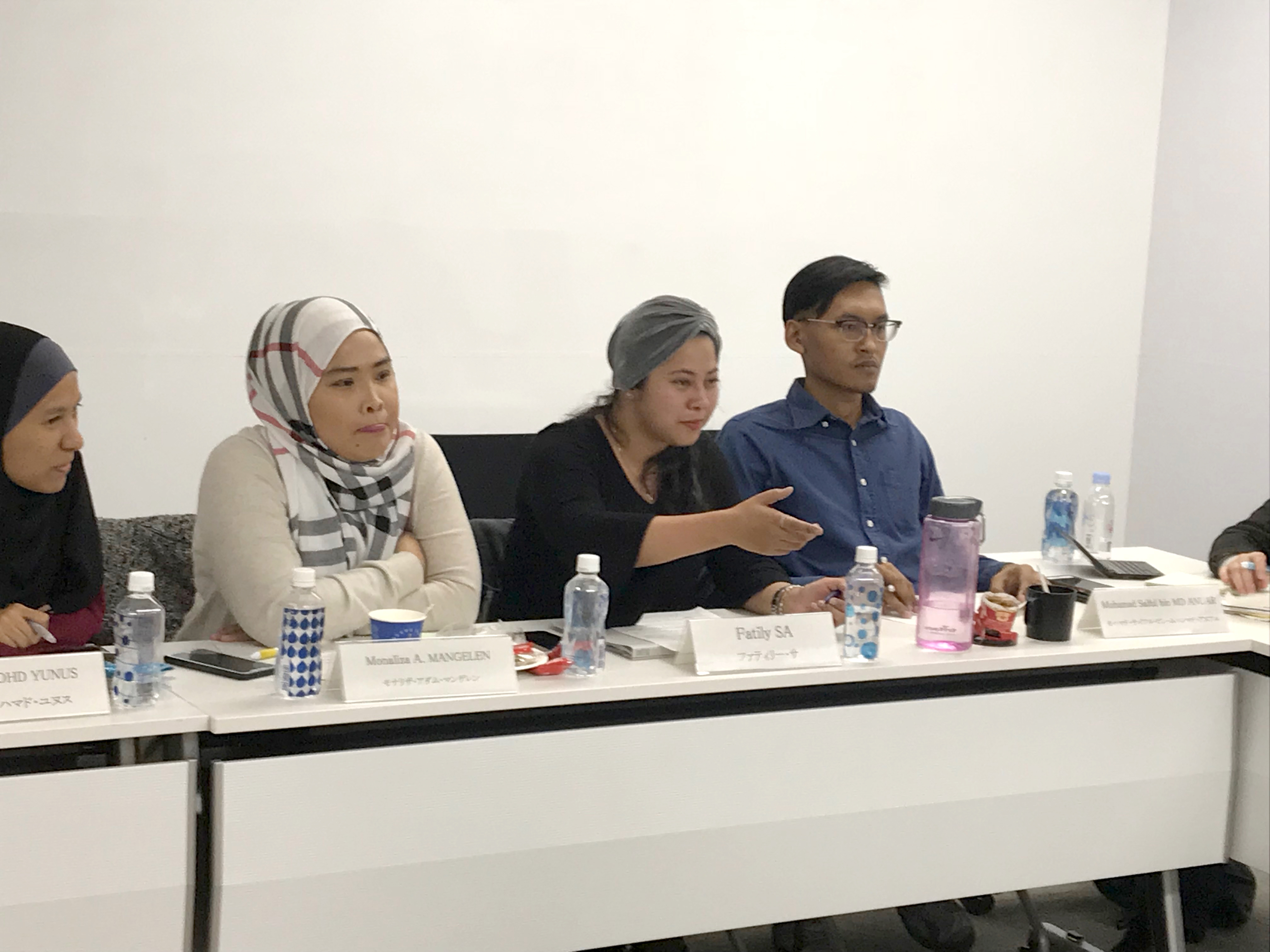
Dialogue with Muslims living in Japan
On the 7th, the group visited Graduate School of Asia Pacific Studies, Waseda University where Mr. Mohamad Basil Hazman Baharom of Malaysia and Dr. Norma Sari of Indonesia talked about the relationship between religion, morality, and politics in Malaysian and Indonesian contexts. The topics covered the influence of religion on the political system and policy making, the interpretation of Sharia (Islamic law), the roles of Muslim women in social activities, and others. The lectures were followed by group discussion in which more Islam-related questions were brought up, such as how to maintain the core values of Islam as the world is gradually homogenized by globalization, the application of Sharia and secular law in real life, polygamy, and LGBT issues.


At Graduate School of Asia Pacific Studies, Waseda University
In the afternoon, the group visited Mr. Haroon Qureshi, Secretary-General of the Japan Islamic Trust / Masjid Otsuka (Mosque) to learn about the historical background of the place and its activities. According to Mr. Qureshi, when the Eastern Japan Great Earthquake hit Japan in 2011, their immediate and continuing humanitarian assistance to the affected area gradually narrowed the gap between Japanese society and their Muslim community. They also made good efforts to be a part of local events to blend in the community. Mr. Qureshi emphasized that willingness to communicate and showing respect to others were the key to gradually establish themselves in the community. TAMU participants appreciated Mr. Qureshi for his good leadership and years of efforts to spread the true value of Islam to Japanese society.
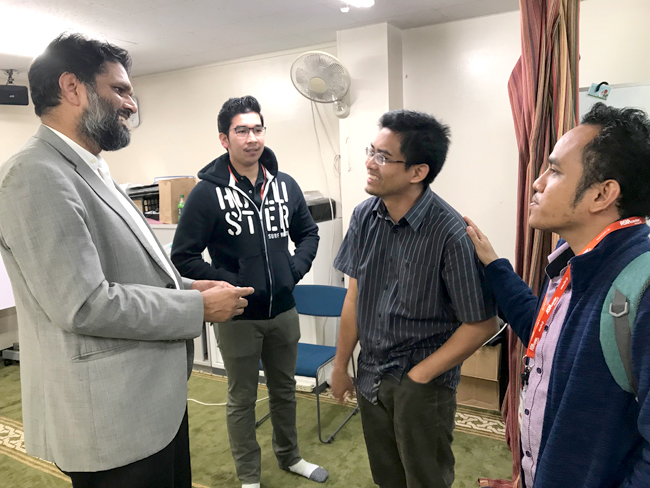
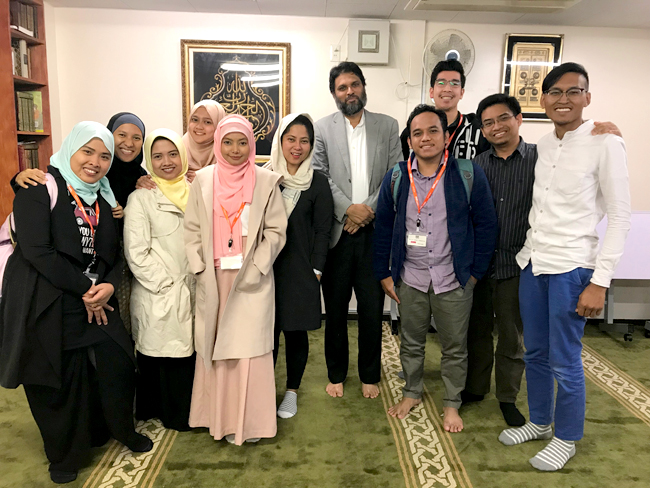
At Masjid Otsuka
In the latter half of the program, the group moved to Shimane prefecture and Yamaguchi prefecture. On the 8th, they first visited the Grand Shrine of Izumo, one of the oldest and most important shrines in the country to learn the history and mythology of the place and to experience Shinto practices. Subsequently, they visited Otsu Kagura-dan, a local Kagura group, to observe Iwami Kagura, a traditional folk performing art specific to Shimane prefecture. TAMU participants fully enjoyed the beautiful and powerful performance in the open-air setting at Yamanobe shrine and learned how such cultural values had been preserved and passed down to the next generation, and how Kagura has served as a unifying element for the people in the community.
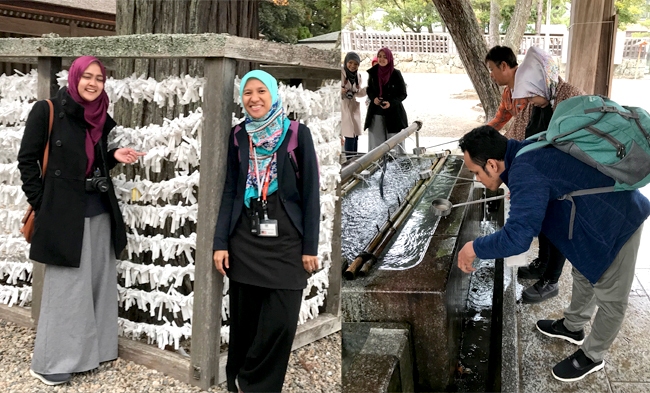
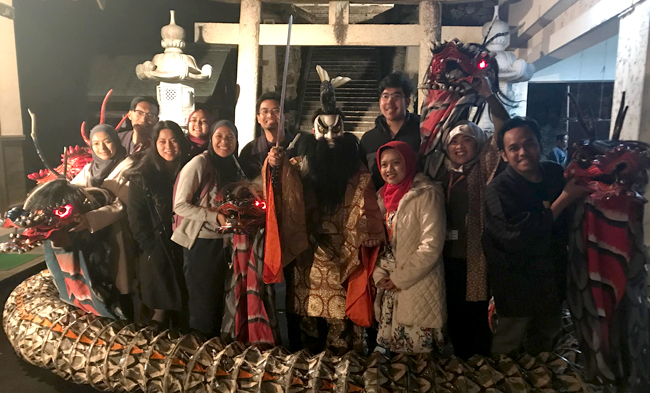
On the 9th, the group was greeted by Professor Amy Wilson and her students at Yamaguchi Prefectural University. After Mr. Muhammad Hazimi Bin Haji Jaidi of Brunei, Ms. Raudah Mohd Yunus of Malaysia, Ms. Rossanee Kaesaman of Thailand, and a couple of university students each made a presentation on what religion means to them, they split up in several groups to further deepen their discussion on the topic. Some comments later received from the students include "By talking about religion openly, we were able to realize how we think of religion and images we carry about religion," "It was a good opportunity to re-think about Buddhism and Shintoism," "Our Southeast Asian fellows seemed to be wondering how Japanese gain inner strength or emotional support without believing in any religion" and many others.
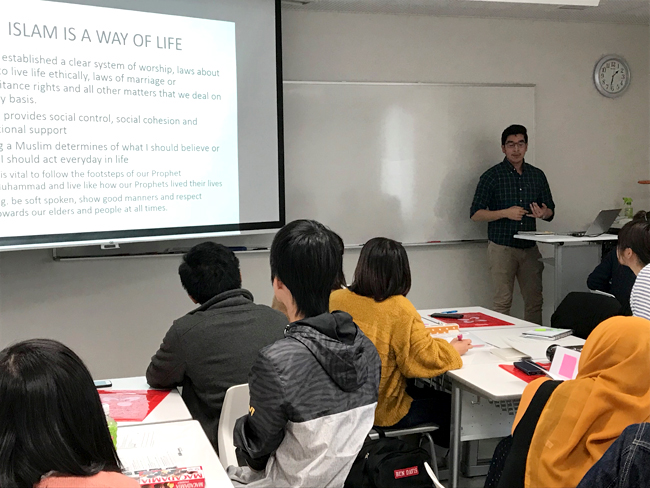
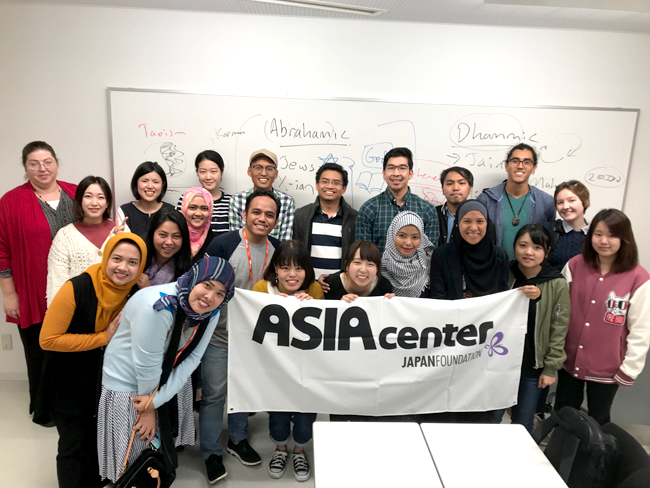
At Yamaguchi Prefectural University
In the Hagi city, in the north of Yamaguchi prefecture and where the industrial revolution assets of the Meiji period are designated as a World Heritage Site, the group gained good knowledge of a valuable contribution the city made in Japan's modernization process. Through visits to the two main places, the Shoin Shrine and the Hagi Museum, the group learned the importance of having ambition, courage, and education to achieve one's goal.


On the 12th, the last day of the program, a public forum was held at the Japan Foundation to reflect on and share what they learned with Japanese public. In representing the TAMU group, Ms. Monaliza A. Mangelen of the Philippines presented on "Islam and Japanese Society and Culture"; Mr. M. Fadlan L Nasurung of Indonesia, on "Japanese Youth in the Eyes of Young Muslims"; and finally Mr. Mohamad Saiful bin Md Anuar, on "A Proposal to Japanese Society to Realize a Rich Society that Subsumes Different Values."
The first two presenters shared their observations that Japanese society and Islamic teachings have much in common, for instance, to value modesty, respect for elderly people, and cleanliness and purity and so forth, although Muslims and the majority of Japanese fundamentally have different perceptions and understanding of religion. They also found that Japanese youth in general have open minds and a strong willingness to learn about foreign cultures and religions. According to their analysis, Japanese youth may face identity issues through inter-cultural experiences as the number of foreigners visiting Japan increases in coming years.
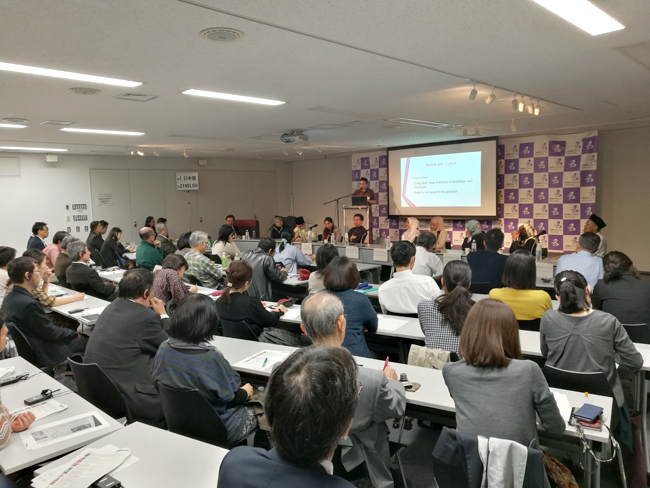
Finally, as the way forward for Japan, some of Mr. Mohamad Saiful bin Md Anuar's suggestions for Japanese society were creating more opportunities for cross-cultural and cross-religious engagement, nurturing inclusive and open leaders, the positive portrayal of minorities and religious communities in the media, and developing multicultural content (e.g., animations, movies).
When the group visited Japan in November, the country's new policy to expand acceptance of foreign workers was intently discussed in the media. With this as background, TAMU members and the Japanese audience shared their ideas on how both Japan and Southeast Asian countries could embrace cultural diversity and realize a more harmonious and inclusive society not limited to promoting Islam-Japan mutual understanding. One of the questions from the floor suggested that Japan must have a lot to learn from Southeast Asia, where people enjoyed a long history of living together in multi-ethnic and multi-religious environments.
The event survey showed that about 95% of those who attended were "satisfied" with this event saying that "I felt that I need to learn again the history of Southeast Asia," "It was refreshing to hear that education plays a crucial role in realizing a multicultural society from Muslim point of view," "I was able to see how religion in Japan is perceived from the outside world," and many other similar comments.

My Eyes Tokyo featured a special report on this final sharing session. Please visit the site for more details (Japanese language only).





